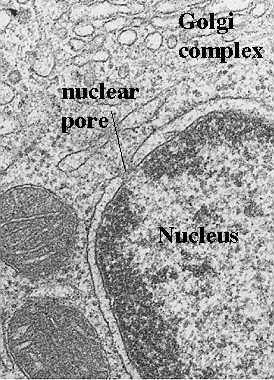
Membrane Structure
The cell is highly organized with many functional units or organelles. Most of these units are limited by one or more membranes. To perform the function of the organelle, the membrane is specialized in that it contains specific proteins and lipid components that enable it to perform its unique roles for that cell or organelle. In essence membranes are essential for the integrity and function of the cell.
Membrane components may:
- be protective
- regulate transport in and out of cell or subcellular domain
- allow selective receptivity and signal transduction by providing transmembrane receptors that bind signaling molecules
- allow cell recognition
- provide anchoring sites for cytoskeletal filaments or components of the extracellular matrix. This allows the cell to maintain its shape and perhaps move to distant sites.
- help compartmentalize subcellular domains or microdomains
- provide a stable site for the binding and catalysis of enzymes.
- regulate the fusion of the membrane with other membranes in the cell via specialized junctions )
- provide a passageway across the membrane for certain molecules, such as in gap junctions.
- allow directed cell or organelle motility
Test yourself! How much do you know about membranes?
- Which component (s) of membranes give it its fluid characteristics?
- What feature in a membrane helps to prevent freezing? Be specific.
- Which part of a membrane helps it keep its shape (prevents deformation)?
- How are proteins arranged in a membrane? What is the difference between a transmembrane protein and a peripheral membrane protein?
- What is a microdomain, and how is it formed?
- If one type of membrane contains 76% proteins and another type contains only 18% proteins, what might you conclude about functional differences?
- What experiments might you conduct to prove that proteins moved in the plane of the membrane?
- How do membranes support the polarity of a cell?
- How would you detect receptors in the plasma membrane of a cell?
- In a freeze-fracture/freeze etch specimen, what are the bumps seen in the plane of the membrane?
- How would you distinguish tight, or occluding junction between two cells, both structurally and functionally.
- What experiments would you use to prove cells were communicating via gap junctions? Do you know how gap junctions are formed?
- What does the presence of microvilli signify?
- What experimental approach could you use to show that a protein is inserted in the membrane?
What have you learned about membranes?
- Architecture allows for fluidity and order.
- Proportion of lipids and proteins vary with the cell or the domain
- Each molecular component has unique functions vital to the cell and its domain
- Membranes help organize the cell into domains
and microdomains. This:
Allows the cell to be regionally polarized
Supports functional groups of proteins, enzymes, receptors, etc that work together
Provides order and organization to membranes
For more information, contact:
Gwen Childs, Ph.D.,FAAA
Professor and Chair
Department of Neurobiology and Developmental Sciences
University of Arkansas for Medical Sciences
Little Rock, AR 72205
For questions, contact this email address:






